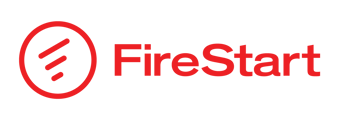The Main tab is again split into sections, which are:
- Model
- Model Management
- Business Entities
- Selection Empty
- Modeling Assistant
- Actions
Model
|
|
New Model |
|
|
Reload |
|
|
Save |
|
Save as |
|
|
|
Undo Arrow |
|
|
Redo Arrow |
|
|
Check Out Check Out allows you to lock your model against changes from other users. So if another user wants to make changes to the locked model, he gets a message that it is locked and he can't save anything he changed. If a model is locked you get to see that in the model repository with a closed padlock. |
|
|
Print With the menu item Print, you can open the print support page. The hot-key for this action is "Ctrl+P". |
|
|
Find |
|
|
Settings With a click on Settings, a window opens where you can make changes to the settings of a model. For example, the process owner can be changed there, or whether the workflow runs live or just for testing. Another way to open the settings is to go to the model properties and click on the wrench icon in the Meta-Information section. |
Model Management
|
|
Version Overview |
|
|
Manage Used Models With Manage Used Models, you can select the specific version of a model which you want to use in your process. This version will be available as the standard version in every dialog where you can select models. By double-clicking a model, it is added and can be referenced from any dialog which allows you to select a model. In this dialog, you can also manage the used model version, which means if there exists a later version of a model than you currently use, you can update to a later version. |
|
|
Usages Overview Example: you have a role model in version 1.0 used in a process model. Now you change the role model and have a new version which is 2.0. To update this version in the process model, go to the role model Usages Overview and click Update Usages. As a result, the process model now uses the new version of the role model (2.0). |
Business Entities
|
|
Edit Workflow Variables This menu item allows you to add variables which you can use during your workflow to store data. These variables are local, which means they are only defined and available for the specific process and not for any other processes. It is also possible to reassign values to the variables, the old value is overwritten then. |
|
|
Define Business Entity |
Selection Empty
|
|
Delete By selecting an element in the canvas, the Delete button in section Selection Empty is activated making it possible for you to delete the selected element. The same functionality can be found in the quad menu of an element. |
|
|
Paste If you have copied or cut-out an element to the clipboard, you can enter it into your chosen model by clicking Paste. With choosing a model is meant, that you have the model you want to paste the element in, opened in the canvas. |
| Copy Select the elements that you would like to copy to another model. With clicking Copy the selected elements are copied to the clipboard, so you can then Paste it into another model. |
|
|
|
Cut Select elements you would like to transfer to another model. With Cut, the selected elements are deleted from your model and automatically saved to the clipboard. You can now Paste them into the desired model. |
Format Painter
| Format By clicking this item, you enter the formatting mode. |
|
| Font Enables you to change the font of the selected shape on the canvas. |
|
| Color Enables you to change the color of the selected shape on the canvas. |
|
|
|
Shape Enables you to change the shape of the selected shape on the canvas. |
Modeling Assistant
|
|
Dynamic Space The Dynamic Space Assistant enables the functionality to get more space. This can be done with right-click and hold an empty spot on the canvas and move the cursor to the right or down. |
|
|
Connection Assist With the Connection Assistant, line proposals are shown. If you drag & drop elements on the canvas you get line suggestions for the connection of the elements. To accept the suggestion simply click on the question mark of the suggestion. |
Actions
|
Connect All |
|
|
|
Auto Layout |
